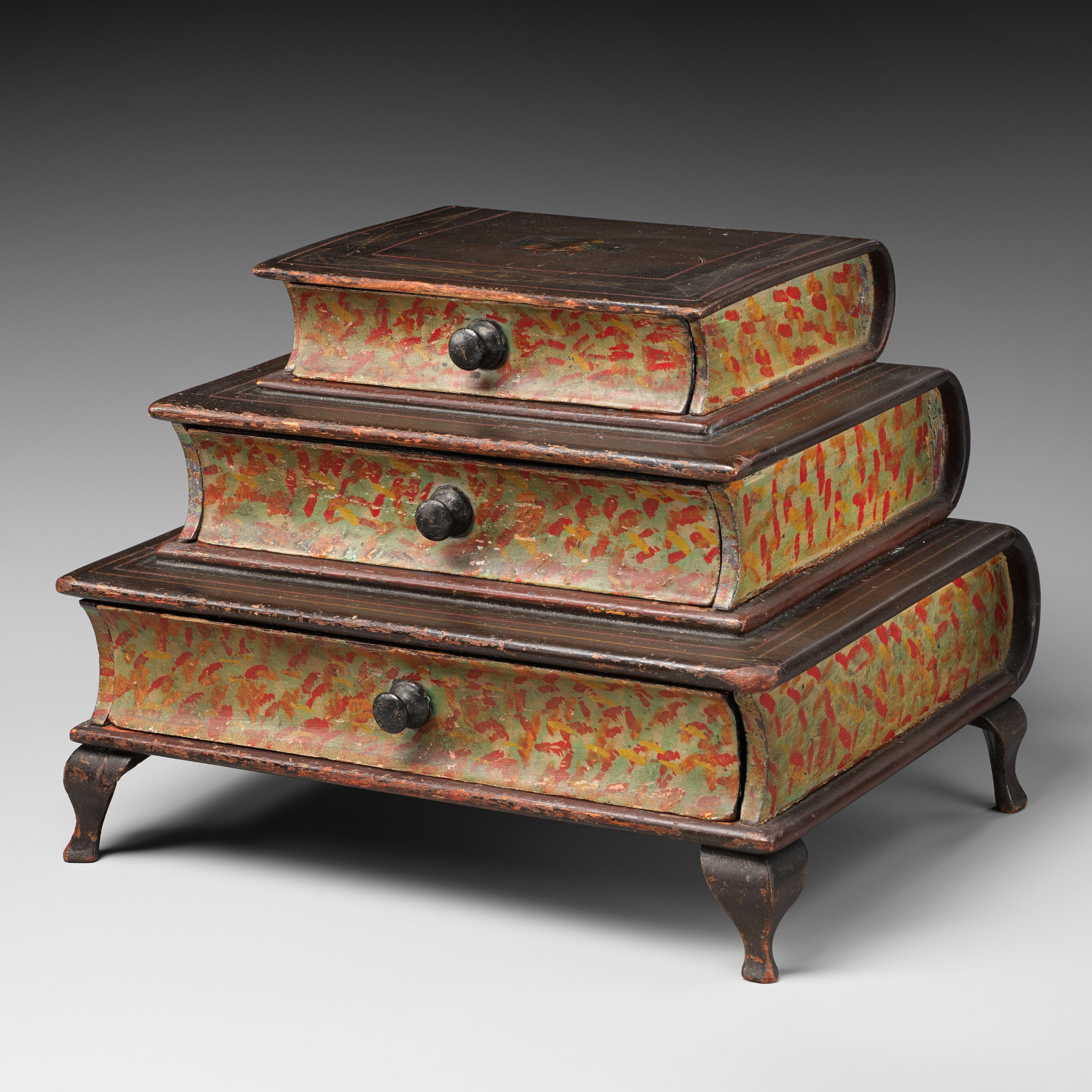Amusements, gifts, and miniatures
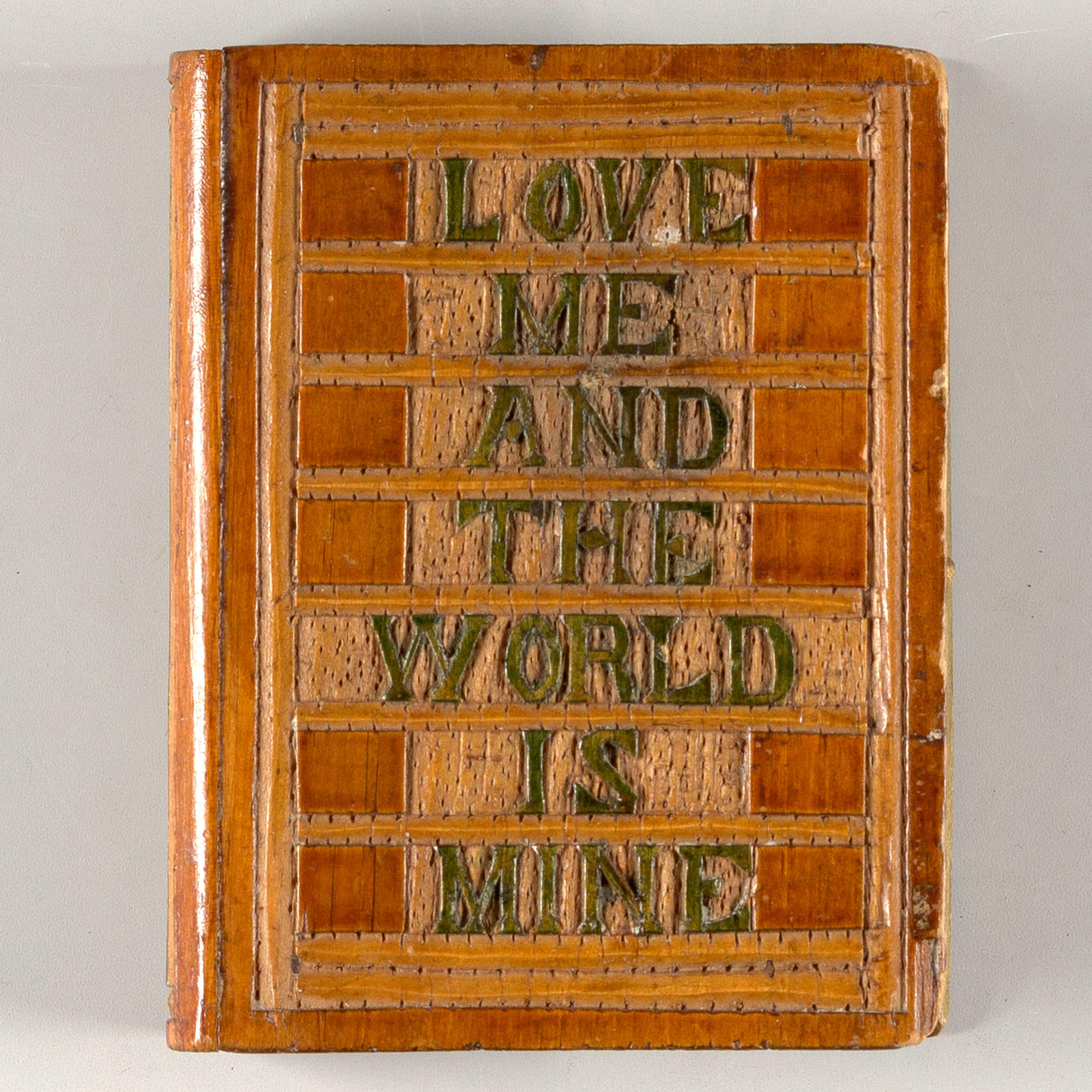
Book-like amusements, friendship gifts, love tokens, and miniatures have been made for many purposes in a wide range of designs and materials. People from many cultures, ages, and social and economic strata made and owned them, and whether useful or symbolic, many were kept over the generations and revered as personal treasures and family heirlooms. Anyone who enjoys games today may be familiar with bookshelf games and puzzle boxes but may not realize that games, toys, and other amusements, like the snake trick, book-shaped chess board, spelling game, and domino set shown, have such a long history. The tradition of making and giving jewelry, treasure boxes, and other personal book-shaped items as symbols of remembrance, love, and friendship is an old one too, as illustrated by the bone and silver charms, jewelry, monogramed toothpick case (for the person who has everything), and the other unusual tiny treasures in this case. Other love tokens and miniatures have been peppered throughout the exhibition.
Selected Artworks
Press the down key to skip to the last item.
Relics and book sculptures
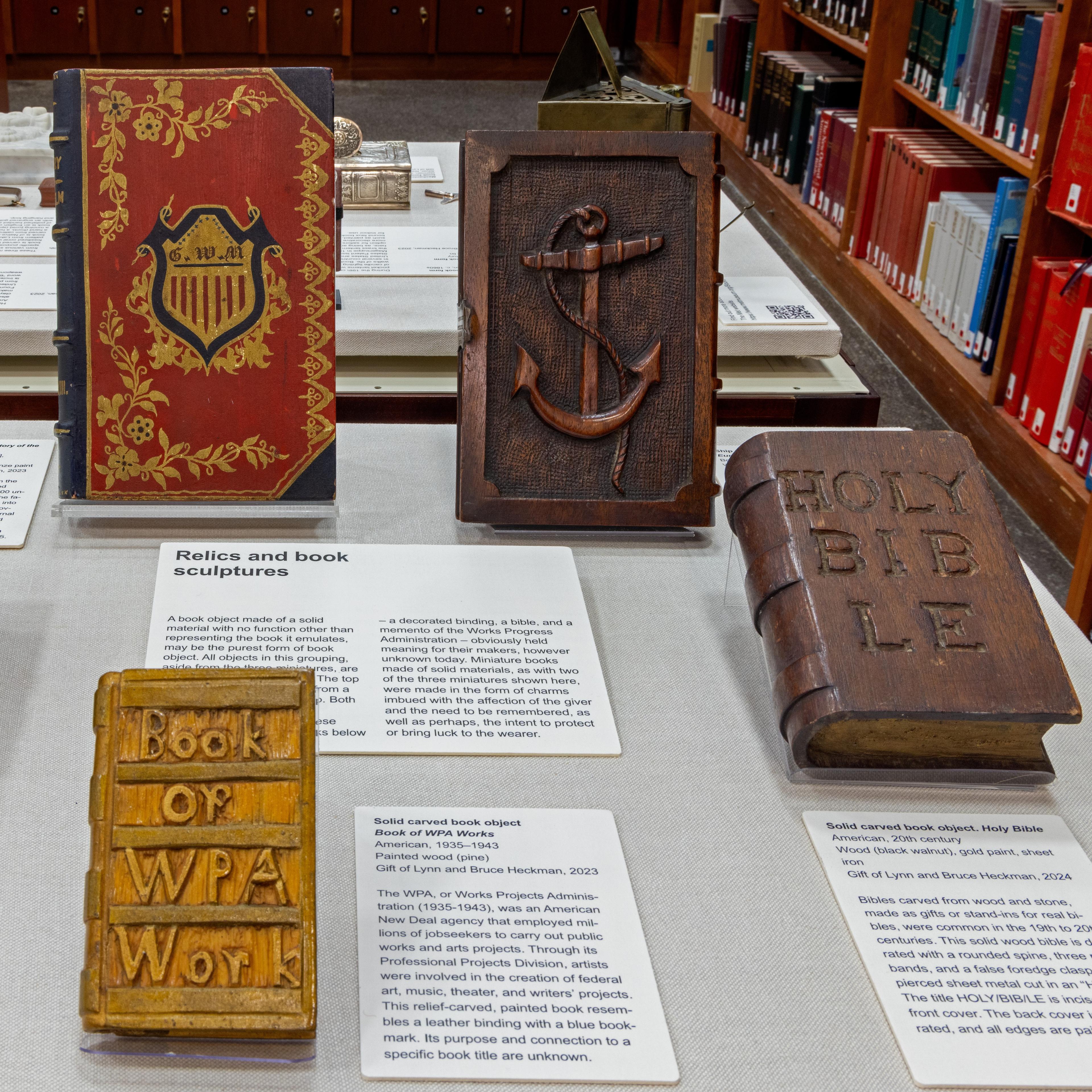
A book object made of a solid material with no function other than representing the book it emulates, may be the purest form of book object. All objects in this grouping, aside from the three miniatures, are life-sized solid wood books. The top two books are relics, made from a famous tree and a naval ship. Both were destroyed, yet in-part resurrected in the form of these objects. The three solid books below – a decorated binding, a bible, and a memento of the Works Progress Administration – obviously held meaning for their makers, however unknown today. Miniature books made of solid materials, as with two of the three miniatures shown here, were made in the form of charms imbued with the affection of the giver and the need to be remembered, as well as perhaps, the intent to protect or bring luck to the wearer.
Selected Artworks
Press the down key to skip to the last item.
Antiquarian books of a practical nature
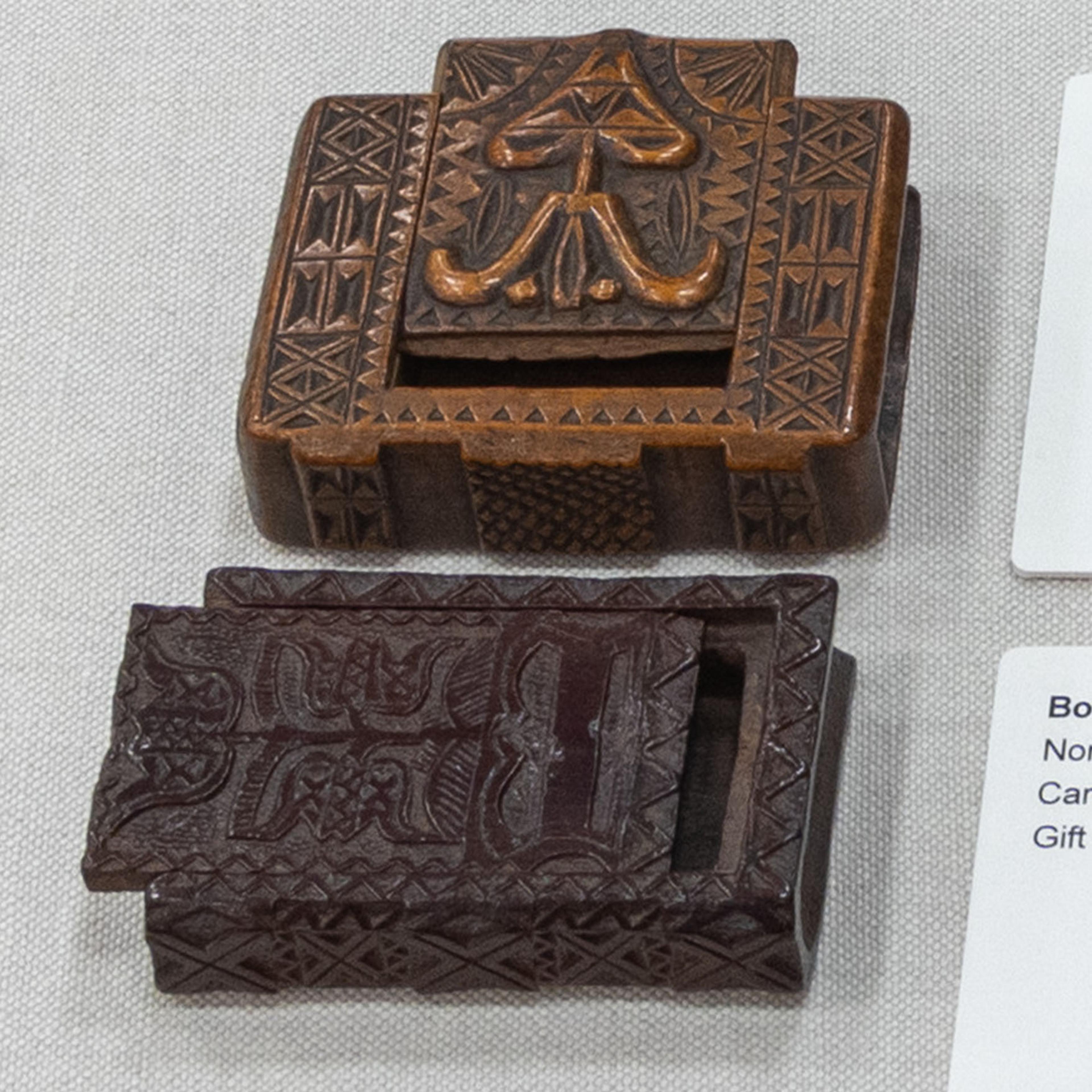
This grouping includes the oldest, rarest objects in the Heckman gift. Their functions, formats, decorations, and origins are a window into the variety of book objects made in the 18th and 19th centuries. Here we see some extraordinary boxes, quite sensitive to the physicality of books. They include an early 18th-century box with a tulip motif, two 18th-century chip-carved tobacco or vanity boxes, a finely engraved box with a cityscape, an unusual four-part box, possibly a sailor’s box, and a box for an American Civil War lancet, which captures the aesthetic of a mottled calfskin binding of the period. Although few are dated and makers are unknown, we know that many book objects were made and the knowledge of making them was passed through word of mouth and copying. While some contemporary instructions for making women’s crafts were available in publications like Godey’s Lady’s Book (Philadelphia, 1830-1878), printed instructions for book objects are extremely rare.
Selected Artworks
Press the down key to skip to the last item.
Stone and metal book objects
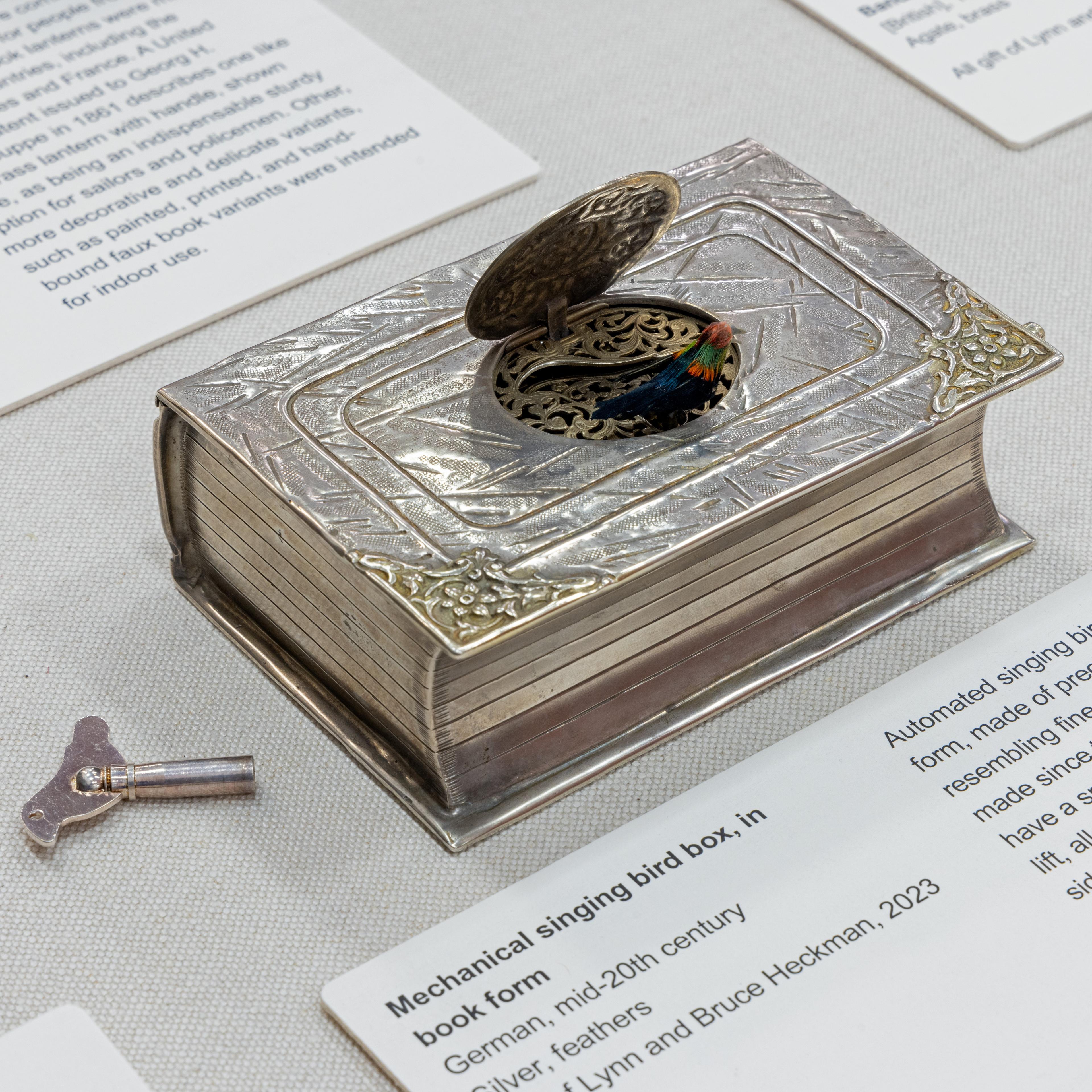
The custom of making stone books in many countries — as tokens of friendship and love, commemorative objects, bibles, and souvenirs — has been an international craft tradition practiced by professional and amateur carvers since the mid-19th century. Most stone books are of a deeply personal nature, and all seem to highlight the book form as an object of importance. Their sizes range from hand-held to monumental, and their designs range from the simplest of book forms to those resembling elaborate fine bookbindings. Many types of stones were used, and some stone books were painted to appear as other more expensive stones or as real books. The five stone books in this case include Petosky stone (regional to Lake Michigan), Catlinite (native to Minnesota and Ontario), white marble, and banded agate. The three metallic objects shown are two aesthetically different portable candle lanterns and an amusing automated musical singing bird which resides in a silver book.
Selected Artworks
Press the down key to skip to the last item.
Spruce gum and bible boxes
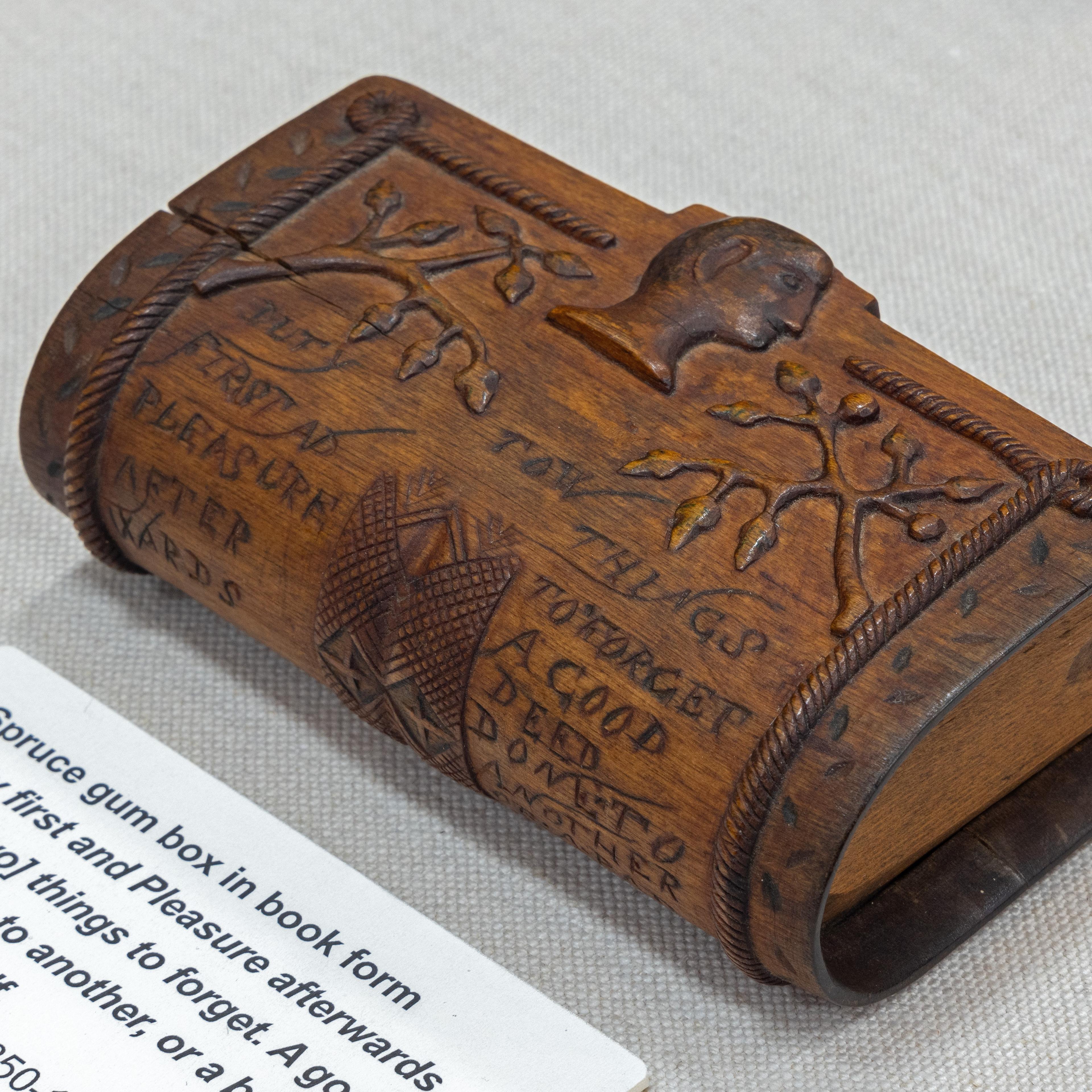
The six boxes shown were made in a style which originated in Scandinavia and migrated to America. The body of the boxes are carved out of a solid piece of wood, with a channel chamfered out at both ends for sliding lids. The structures, carving techniques, and decorative motifs of the boxes vary. The larger boxes may be bible boxes, but the small ones are known as spruce gum boxes, a lumberman’s craft practiced from the mid-1800s to about 1920 in the Northern United States and Canada at a time when the men spent long periods of time in the deep woods away from their loved ones. During the era, spruce gum was a highly desirable commodity which could be chewed and had medicinal properties. The lumbermen used the pocket-sized boxes to collect spruce sap or resin, for themselves and for sale. Highly decorative and personal boxes such as those shown, were obviously made as gifts.
Selected Artworks
Press the down key to skip to the last item.
Table and dresser boxes
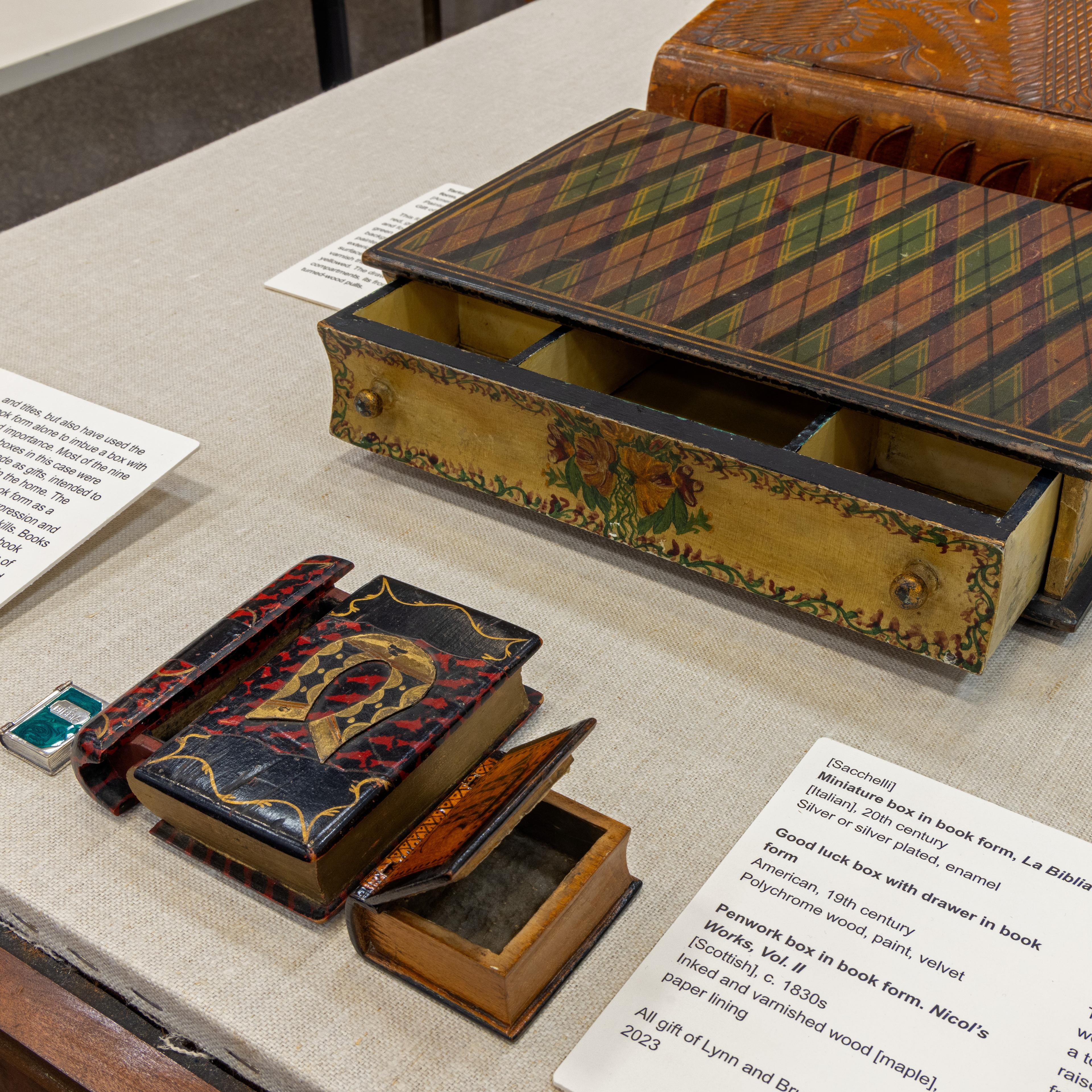
The book is an ideal form for making boxes, as only a few added features will make the box more interesting. This device has been widely used by custom and commercial box-makers, and it has been proven to add novelty and meaning to boxes. Wooden book boxes have been made in a tremendous variety in imitation of specific book subjects and titles, but also have used the book form alone to imbue a box with added importance. Most of the nine wooden boxes in this case were probably made as gifts, intended to create beauty in the home. The artists used the book form as a canvas for creative expression and as a showcase for their skills. Books typically used as models for book boxes include multi-volume sets of known or fictional works, bibles and prayer books, photograph albums and friendship books, account books, literary and historical works, children’s books, and fine bindings.
Selected Artworks
Press the down key to skip to the last item.
